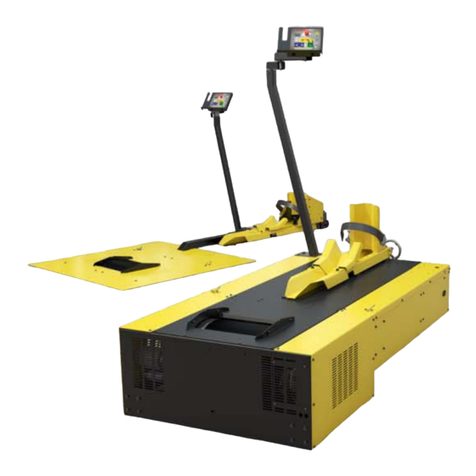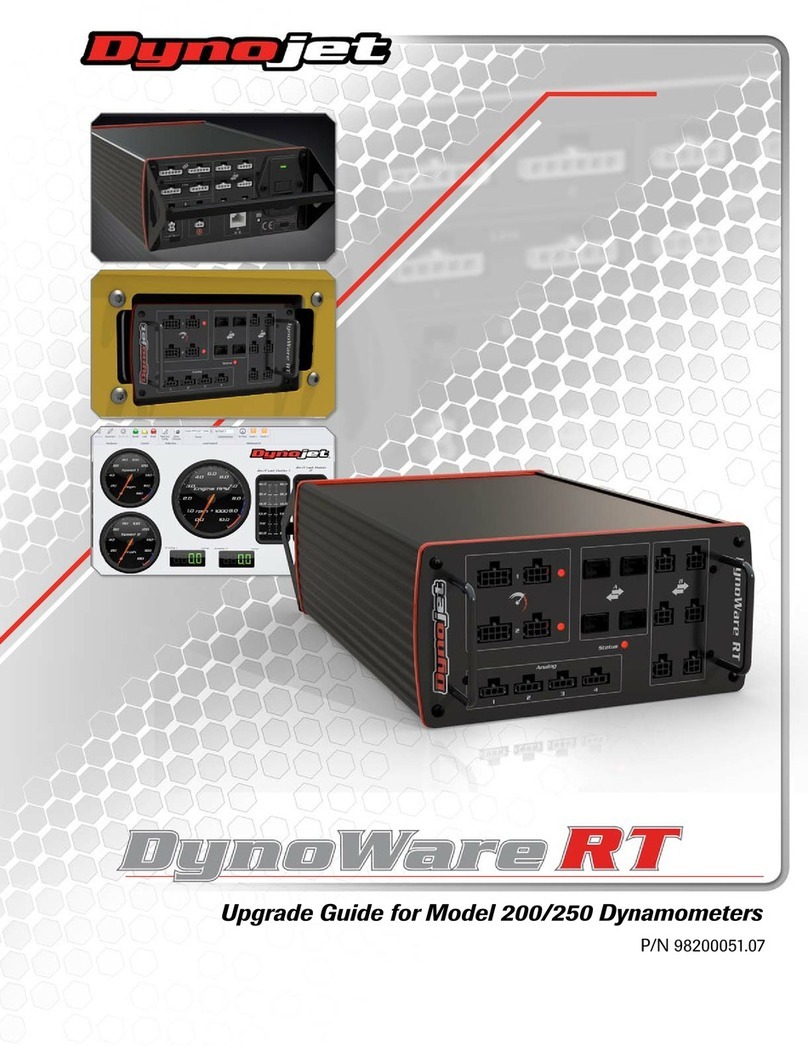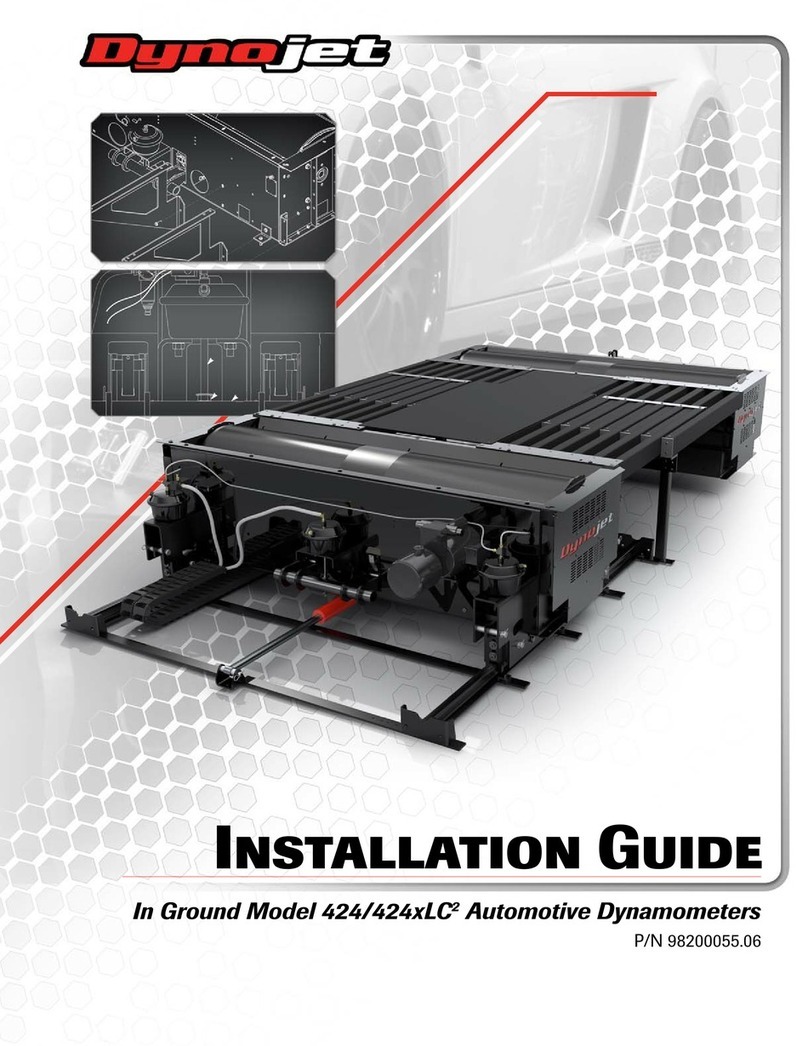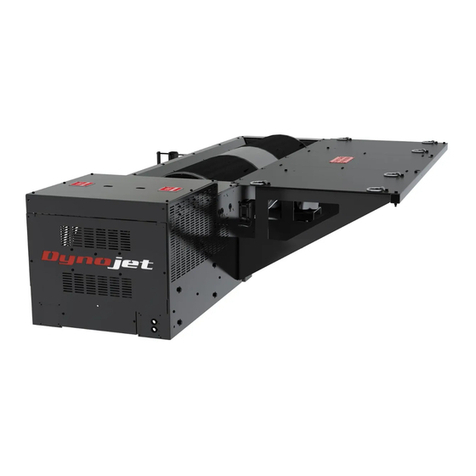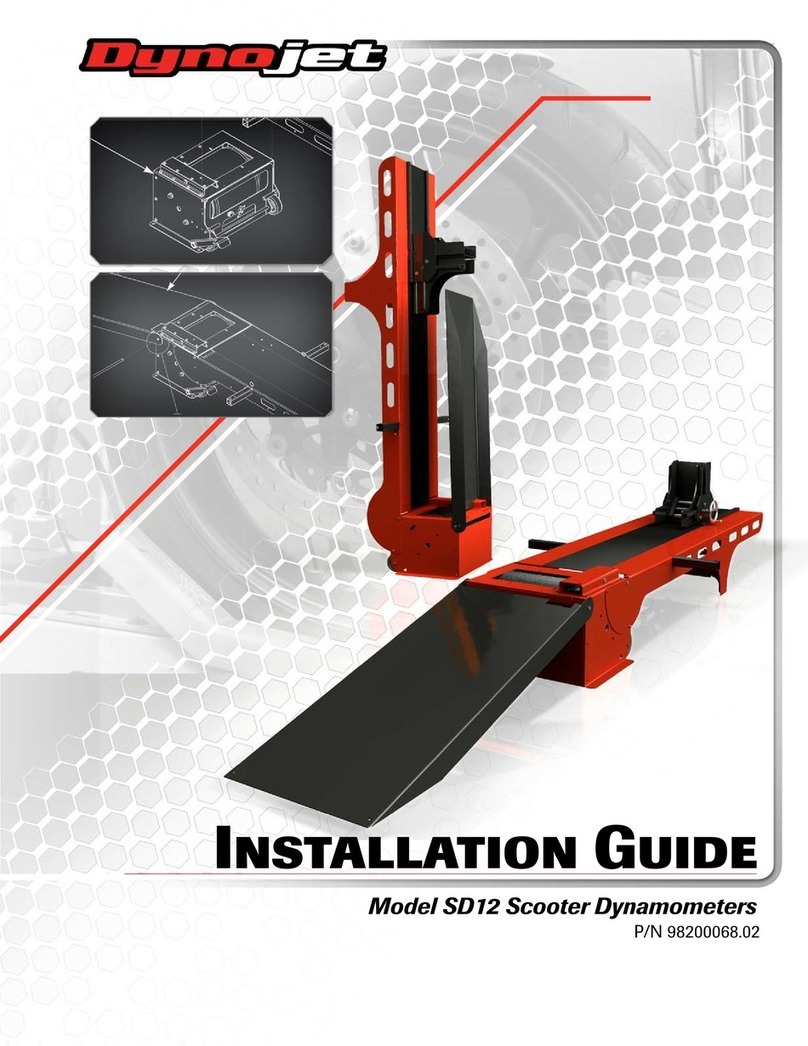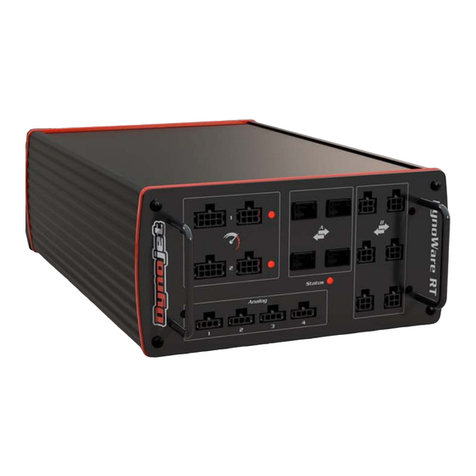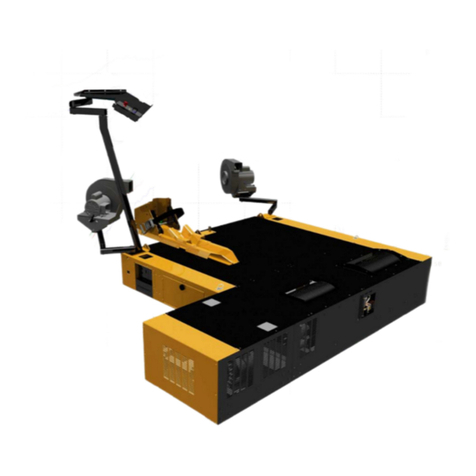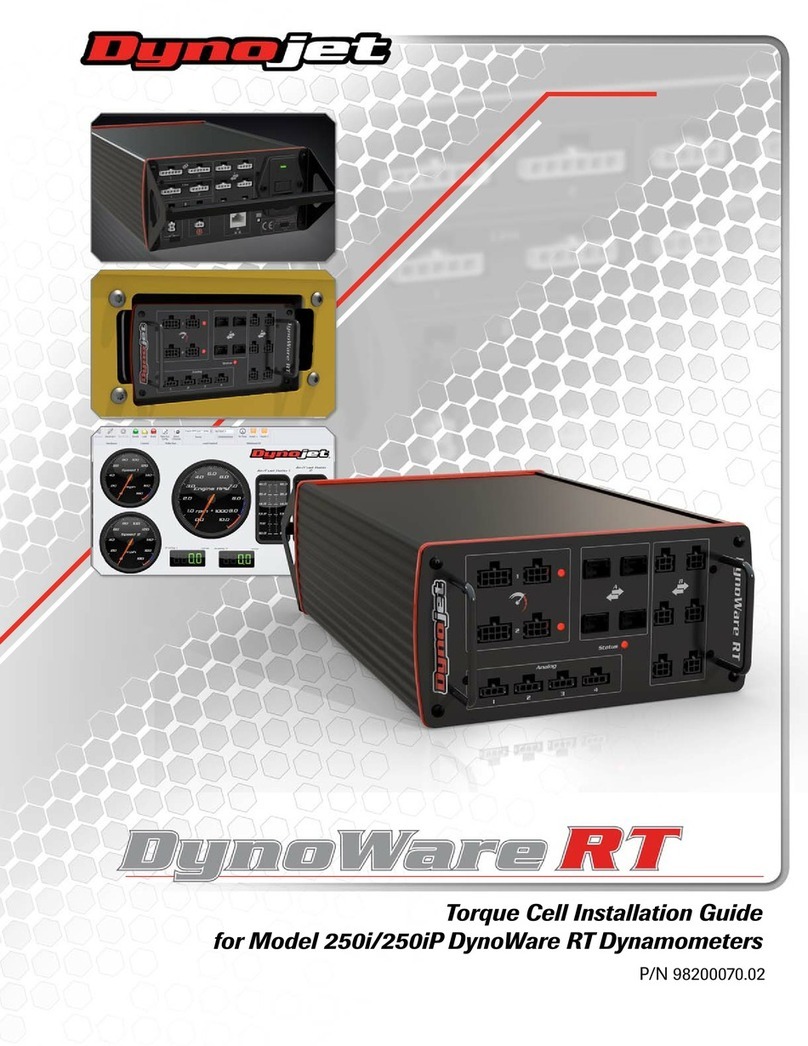
Above Ground Model 224 Automotive Dynamometer Installation Guide
ii
Above Ground Model 224 Automotive Dynamometer Installation Guide
ii
Chapter 2 Dyno Installation
Unpacking and Inspecting the Dyno . . . . . . . . . . . . . . . . . . . . . . . . . . . . . . . . . . . . . 2-2
Dyno Installation . . . . . . . . . . . . . . . . . . . . . . . . . . . . . . . . . . . . . . . . . . . . . . . . . . . . . . . . 2-6
Removing the Dyno from the Crate . . . . . . . . . . . . . . . . . . . . . . . . . . . . . . . . . . . . . . 2-6
Placing the Dyno in Front of the Lift . . . . . . . . . . . . . . . . . . . . . . . . . . . . . . . . . . . . . 2-7
Installing the Drum Guards . . . . . . . . . . . . . . . . . . . . . . . . . . . . . . . . . . . . . . . . . . . . 2-8
Installing the Interface Guide . . . . . . . . . . . . . . . . . . . . . . . . . . . . . . . . . . . . . . . . . . . 2-9
Anchoring the Dyno . . . . . . . . . . . . . . . . . . . . . . . . . . . . . . . . . . . . . . . . . . . . . . . . . 2-12
Eddy Current Brake Installation . . . . . . . . . . . . . . . . . . . . . . . . . . . . . . . . . . . . . . . . . 2-13
Cable Routing . . . . . . . . . . . . . . . . . . . . . . . . . . . . . . . . . . . . . . . . . . . . . . . . . . . . . . . . . 2-14
Identifying the Cables . . . . . . . . . . . . . . . . . . . . . . . . . . . . . . . . . . . . . . . . . . . . . . . . 2-14
Routing the Cables . . . . . . . . . . . . . . . . . . . . . . . . . . . . . . . . . . . . . . . . . . . . . . . . . . 2-16
Aligning the Optical Pickup Card Tab . . . . . . . . . . . . . . . . . . . . . . . . . . . . . . . . . . . 2-18
Deck Installation . . . . . . . . . . . . . . . . . . . . . . . . . . . . . . . . . . . . . . . . . . . . . . . . . . . . . . . 2-19
Logo Panel Installation . . . . . . . . . . . . . . . . . . . . . . . . . . . . . . . . . . . . . . . . . . . . . . . . . 2-24
Chapter 3 Eddy Current Brake Installation
Eddy Current Brake Installation . . . . . . . . . . . . . . . . . . . . . . . . . . . . . . . . . . . . . . . . . . 3-2
Before Installing the Eddy Current Brake—Verify Optimal Brake Cooling . . . . . . 3-2
Before Installing the Eddy Current Brake—Verify Mounting Holes . . . . . . . . . . . . 3-2
Unpacking the Eddy Current Brake . . . . . . . . . . . . . . . . . . . . . . . . . . . . . . . . . . . . . . 3-3
Installing the Temperature Sensor . . . . . . . . . . . . . . . . . . . . . . . . . . . . . . . . . . . . . . 3-9
Installing the Bearing, Spline Shaft, and Driveline Assembly . . . . . . . . . . . . . . . 3-10
Installing the Eddy Current Brake . . . . . . . . . . . . . . . . . . . . . . . . . . . . . . . . . . . . . . 3-12
Installing the Load Cell . . . . . . . . . . . . . . . . . . . . . . . . . . . . . . . . . . . . . . . . . . . . . . . 3-14
Installing the Front and Rear Brake Covers and Eddy Current Brake Driver . . . 3-15
Securing the Brake to the Dyno Room Floor . . . . . . . . . . . . . . . . . . . . . . . . . . . . . 3-17
Installing the Top and Logo Panel Covers . . . . . . . . . . . . . . . . . . . . . . . . . . . . . . . 3-18
Load Cell Calibration . . . . . . . . . . . . . . . . . . . . . . . . . . . . . . . . . . . . . . . . . . . . . . . . . . . 3-19
Chapter 4 Basic Dyno Operation
Loading the Vehicle . . . . . . . . . . . . . . . . . . . . . . . . . . . . . . . . . . . . . . . . . . . . . . . . . . . . . 4-2
Connecting the RPM Pickup . . . . . . . . . . . . . . . . . . . . . . . . . . . . . . . . . . . . . . . . . . . . . 4-5
RPM Pickup Descriptions . . . . . . . . . . . . . . . . . . . . . . . . . . . . . . . . . . . . . . . . . . . . . . 4-5
Connecting the Secondary Inductive Pickup . . . . . . . . . . . . . . . . . . . . . . . . . . . . . . 4-6
Connecting the Primary Inductive Pickup . . . . . . . . . . . . . . . . . . . . . . . . . . . . . . . . 4-7
Grounding the Vehicle . . . . . . . . . . . . . . . . . . . . . . . . . . . . . . . . . . . . . . . . . . . . . . . . . . 4-8
Pre-Run Inspection . . . . . . . . . . . . . . . . . . . . . . . . . . . . . . . . . . . . . . . . . . . . . . . . . . . . . 4-9
Before Starting the Engine . . . . . . . . . . . . . . . . . . . . . . . . . . . . . . . . . . . . . . . . . . . . . 4-9
Engine Warm Up . . . . . . . . . . . . . . . . . . . . . . . . . . . . . . . . . . . . . . . . . . . . . . . . . . . . 4-10
After Engine Warm Up . . . . . . . . . . . . . . . . . . . . . . . . . . . . . . . . . . . . . . . . . . . . . . . 4-10
Making a Test Run . . . . . . . . . . . . . . . . . . . . . . . . . . . . . . . . . . . . . . . . . . . . . . . . . . . . . 4-11
Preventative Maintenance . . . . . . . . . . . . . . . . . . . . . . . . . . . . . . . . . . . . . . . . . . . . . . 4-12
Things to Check . . . . . . . . . . . . . . . . . . . . . . . . . . . . . . . . . . . . . . . . . . . . . . . . . . . . . 4-12
Verifying the SAAR Brake Pressure . . . . . . . . . . . . . . . . . . . . . . . . . . . . . . . . . . . . . 4-13
Maintaining the SAAR Brake Shoe Clearance . . . . . . . . . . . . . . . . . . . . . . . . . . . . 4-14


